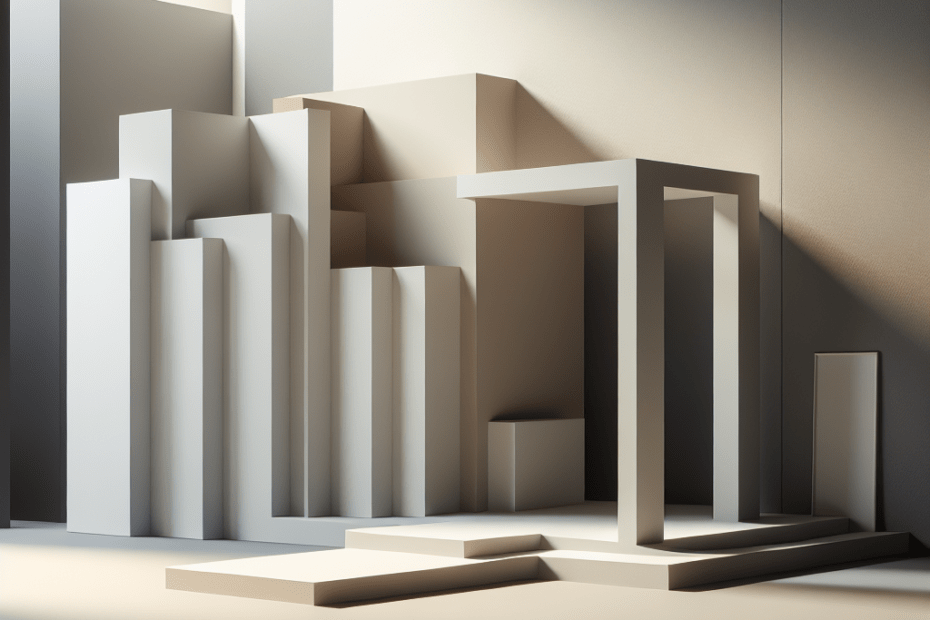“`html
The Power of Neutral Tones in Minimalist Design
Neutral tones have become an essential element in minimalist design, a trend that emphasizes simplicity and functionality. Designers leverage these calming colors to create environments that are both serene and sophisticated. This blog post delves into how neutral tones are shaping minimalist design, highlighting their benefits and applications.
Understanding Neutral Tones
Neutral tones typically include colors such as beige, gray, white, taupe, and cream. They are often used as a backdrop to bring focus on essential elements within a space or design. Given their versatility, they appeal to many aesthetic preferences, making them a timeless choice in the world of design.
The Benefits of Neutral Tones in Minimalist Design
- Calming effect: Neutral colors convey a sense of peace, which can reduce stress and promote relaxation. This is particularly beneficial in living spaces and workplaces.
- Flexibility: They provide a versatile palette that can blend seamlessly with other colors and design elements, making spaces adaptable to changes.
- Enhanced focus: By minimizing distractions, these tones allow important focal points in a room to emerge.
Research indicates that 60% of people prefer calm and neutral tones in their living spaces (Source: Houzz Design Trends Study). Their appeal is not just personal; businesses also use them to create inviting and professional atmospheres.
Incorporating Neutral Tones in Different Spaces
Living Rooms
Neutral tones in living rooms create cozy and inviting atmospheres. Designers might use a beige or soft gray on walls, pairing these with furniture in darker shades to add contrast without being overwhelming.
Kitchens
A kitchen designed with neutral tones can seem larger and more organized. White cabinets paired with stainless steel appliances can look both modern and timeless.
Bedrooms
In bedrooms, neutral tones contribute to a restful environment. Designers often use soft creams and taupes to create a soothing retreat, complimented by textured fabrics for added warmth.
Commercial Spaces
Businesses leverage neutral tones to establish a professional and organized image. Office spaces often feature a combination of grays and whites, providing an ideal backdrop for creativity and focus.
Neutral Tones in Minimalist Design: A Statistical Insight
| Space | Preference for Neutral Tones |
|---|---|
| Living Rooms | 65% |
| Kitchens | 58% |
| Bedrooms | 70% |
| Commercial Spaces | 75% |
(Source: National Design Statistics)
Achieving Balance with Neutral Tones
While neutral tones provide many benefits, they require careful balancing to avoid a dull appearance. Designers use texture, materials, and occasional pops of color to maintain interest without overwhelming minimalism.
- Textures: Mixing different materials, such as wood, linen, and stone, can add depth and interest to neutral spaces.
- Layering: Layering various shades of the same color can create a sophisticated and rich palette.
- Pops of Color: Introducing small pops of color through decorative pieces can enliven a space while preserving its minimalist nature.
Key Takeaways
- Neutral tones bring a calming effect, flexibility, and focus to minimalist design.
- They are suitable for various spaces, including living rooms, kitchens, bedrooms, and commercial spaces.
- Achieving a balance with textures and subtle color additions is essential to avoid monotony.
FAQ
- What are considered neutral tones in design?
Neutral tones include beige, gray, white, taupe, and cream. These colors are understated and provide a versatile backdrop in design. - Why are neutral tones popular in minimalist design?
Neutral tones are popular in minimalist design because they offer a calming effect, flexibility, and the ability to enhance focus on important aspects of a room. - How can neutral tones be used effectively in a bedroom?
In bedrooms, neutral tones can create a soothing environment. Combine them with textured fabrics and subtle patterns to maintain interest and warmth. - Can neutral tones work in commercial spaces?
Yes, businesses often use neutral tones to create an inviting yet professional atmosphere, aiding in concentration and creativity. - How do designers add interest to neutral spaces?
Designers often use textures, layering, and small pops of color through decor to add interest without compromising the minimalist aesthetic.
“`
By effectively using neutral tones in minimalist design, designers craft spaces that are not only aesthetically pleasing but also functional and calming. As the trend continues to grow, their application across various environments only highlights their versatility and enduring appeal.
